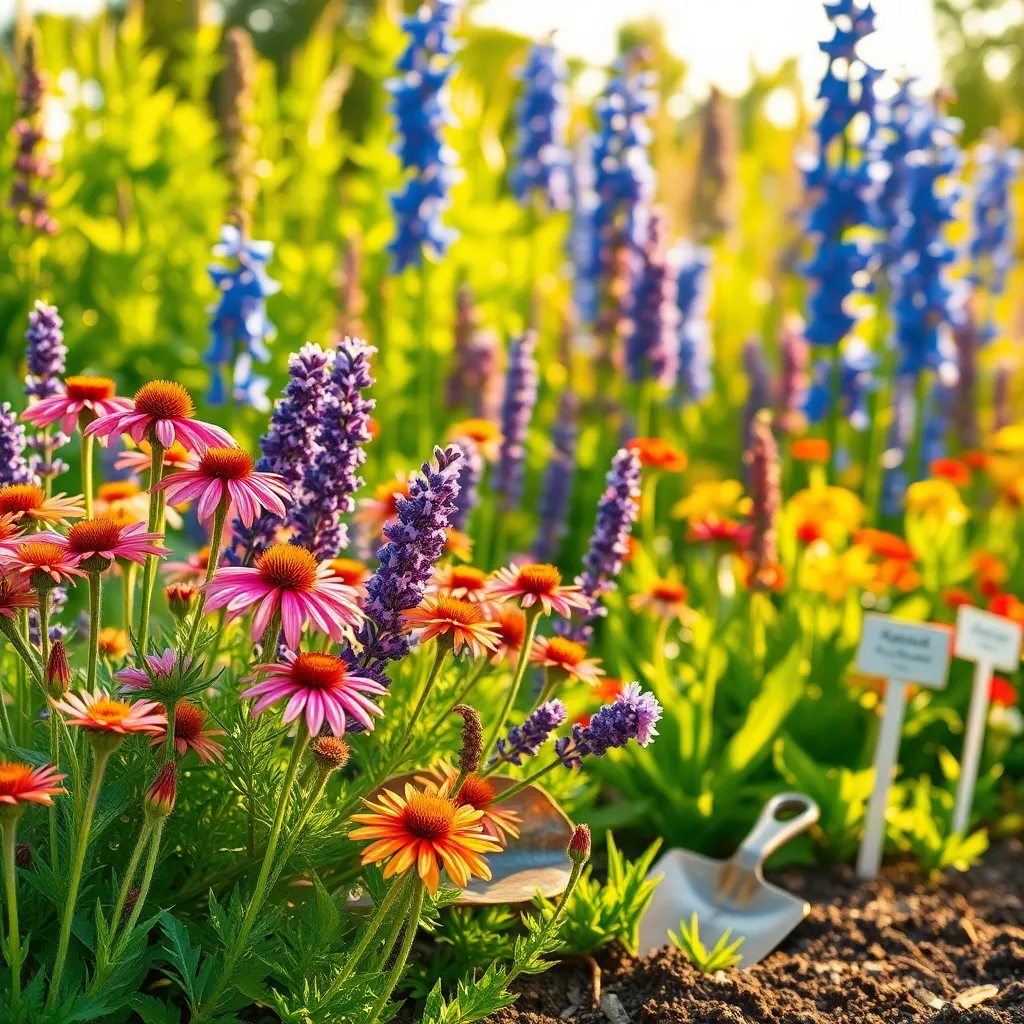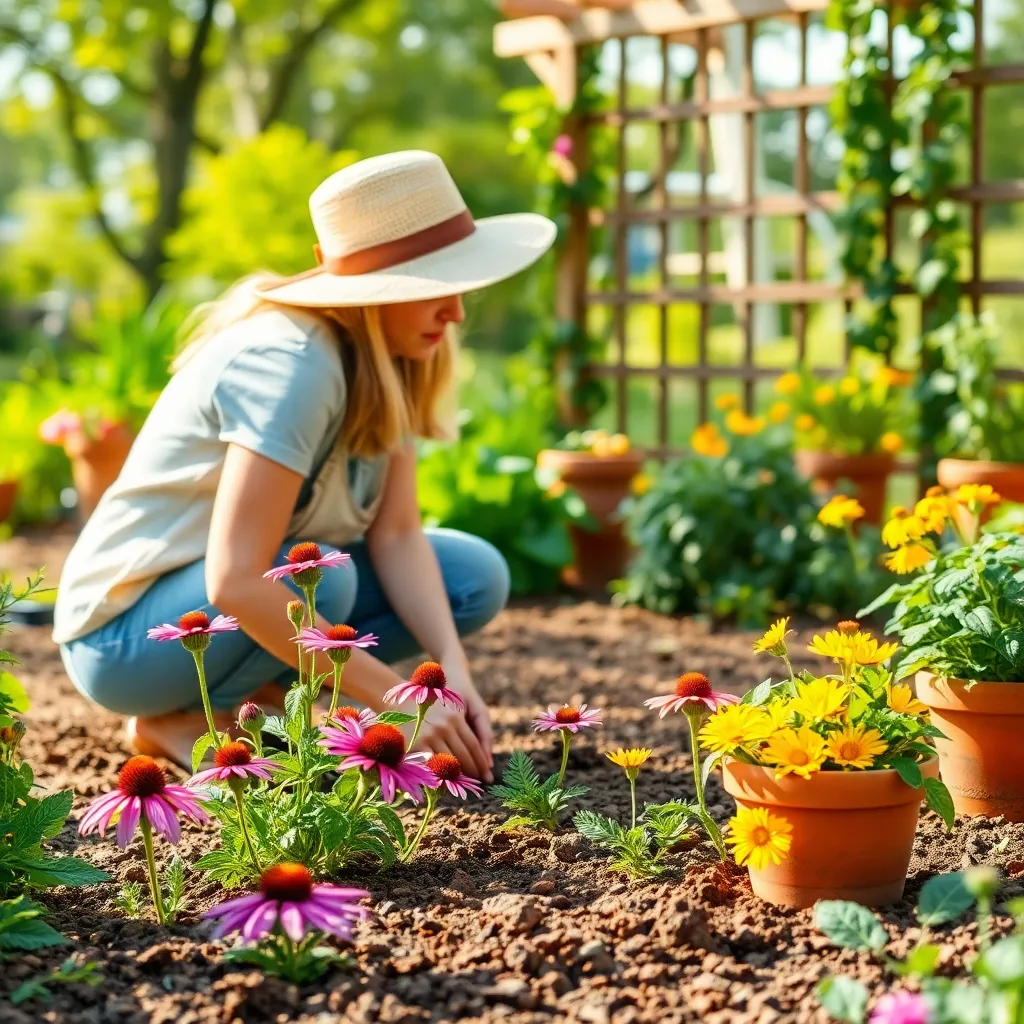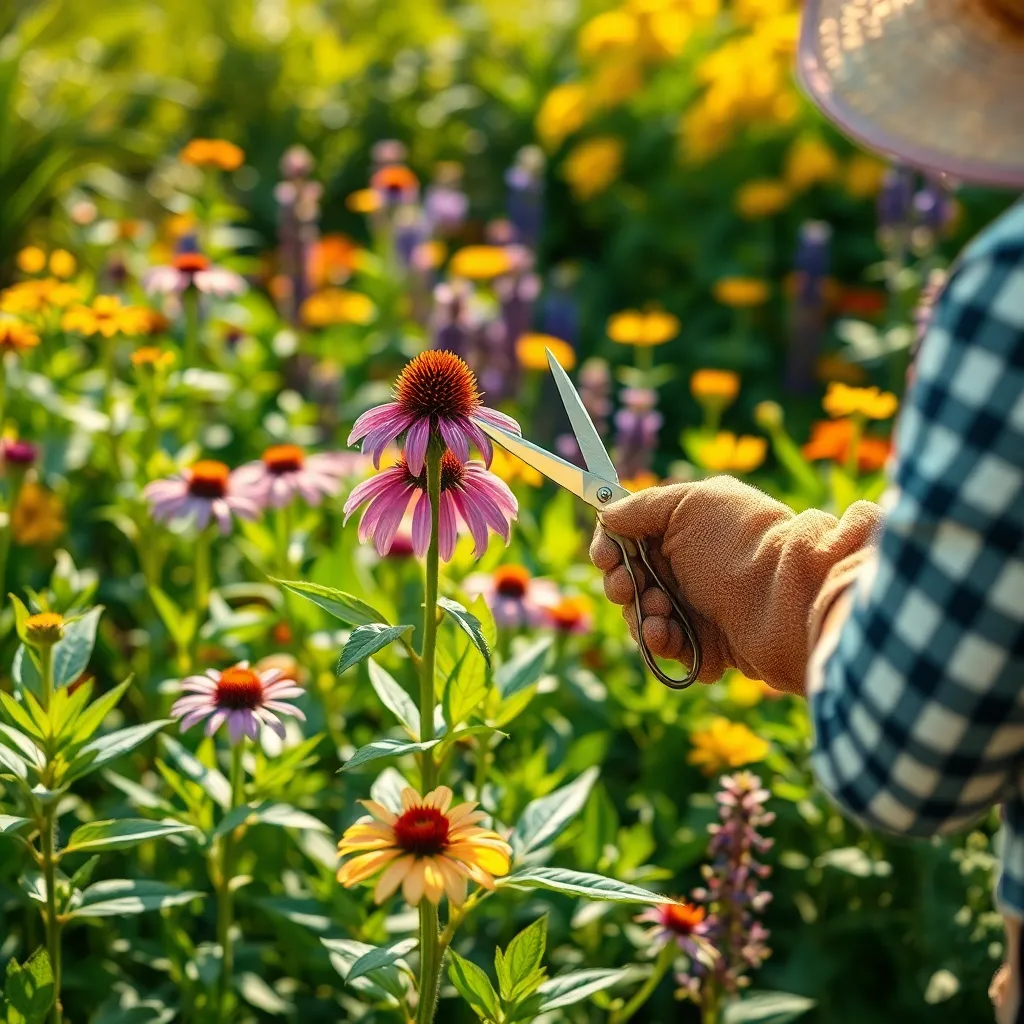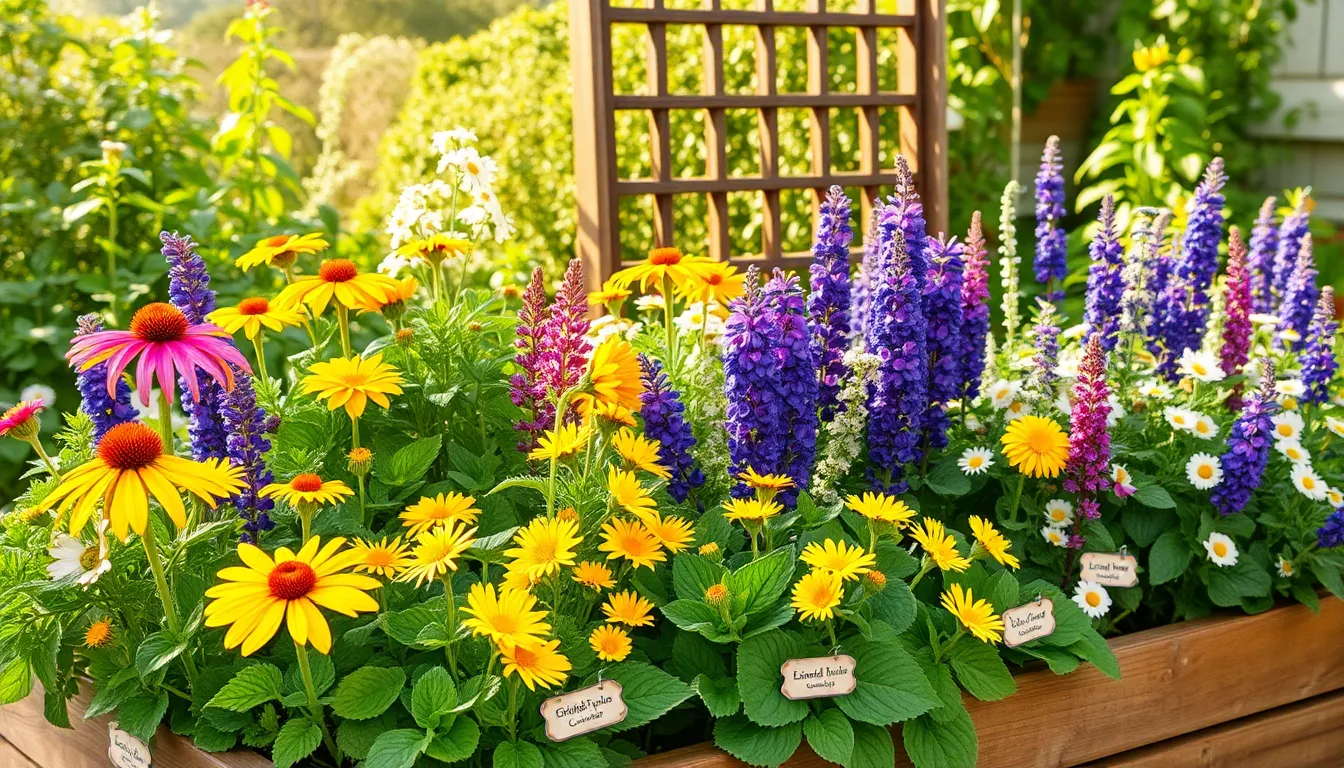Whether your garden is a blank canvas or a well-loved masterpiece, the allure of perennials is undeniable. These reliable plants return year after year, offering a tapestry of colors, textures, and forms that evolve with the seasons, creating a dynamic garden landscape that’s both rewarding and manageable.
For those just dipping their toes into the world of gardening, perennials offer a gentle introduction with their low-maintenance nature and ability to thrive with minimal intervention. Meanwhile, seasoned gardeners will appreciate the depth and diversity that perennials bring, allowing for creative expression and experimentation in garden design.
In this guide, we’re diving into the essentials of perennial gardening, from selecting the right plants for your specific climate and soil to mastering the art of planting and ongoing care. Whether you’re aiming to transform a modest patch into a vibrant oasis or seeking to add a few new layers to your existing garden, you’ll find practical tips and inspiration to help your perennials flourish.
Select Suitable Perennial Varieties

When choosing perennial varieties, consider your garden’s climate and soil conditions to ensure long-term success. Look for plants that are hardy in your USDA hardiness zone to withstand local weather extremes.
Sun exposure is crucial for selecting the right perennials; identify whether your garden offers full sun, partial shade, or full shade. For sunny spots, consider planting coneflowers or daylilies, which thrive with at least six hours of direct sunlight per day.
Soil type plays a significant role in perennial growth, so test your garden soil to determine its pH and drainage characteristics. Amend heavy clay soils with organic matter like compost to improve drainage, especially for plants like lavender that require well-drained conditions.
Consider the mature size of perennials to avoid overcrowding, which can lead to poor air circulation and increased disease risk. Space plants according to their mature spread, typically listed on the plant tag, to ensure they have room to grow and flourish.
Prepare Garden Soil Thoroughly

Before planting perennials, it’s crucial to prepare your garden soil thoroughly. A well-prepared soil provides the foundation for healthy plant growth and blooms.
Begin by clearing the area of weeds, rocks, and debris, which can compete with your plants for nutrients and space. Use a spade or garden fork to turn the soil to a depth of about 12-15 inches, breaking up any large clumps.
Testing your soil is an important step to understand its pH and nutrient levels, ensuring you can amend it properly. Most perennials thrive in well-drained soil with a pH between 6.0 and 7.0, so adjust accordingly with lime or sulfur if needed.
Add organic matter, such as compost or aged manure, which enriches the soil and improves its structure. Spread a 2-3 inch layer of organic material over the soil and mix it well to enhance fertility and drainage.
- For clay soils, incorporate sand or fine grit to improve drainage.
- In sandy soils, add more organic matter to retain moisture and nutrients.
Water the prepared soil a day before planting to ensure it’s moist but not soggy, creating an ideal environment for root establishment. This step helps your perennials settle in better and reduces transplant shock.
Plant During Optimal Season

Choosing the right time to plant your perennials is crucial for their success. Planting during the optimal season ensures that your plants establish strong roots before extreme weather conditions set in.
For most perennials, the best time to plant is either in the early spring or fall. During these seasons, the soil is warm enough to encourage root growth, while the cooler air temperatures reduce stress on the plants.
In spring, aim to plant after the last frost date in your area for a head start on the growing season. This allows the plants to acclimate and grow vigorously as temperatures rise.
Fall planting is ideal for many perennials because it takes advantage of cooler temperatures and autumn rains. This gives the plants a chance to develop a robust root system, making them stronger for the following spring.
To further enhance success, consider the specific needs of the perennials you are planting. For example, some perennials prefer well-drained soil, so adding organic matter like compost can improve soil structure and nutrient content.
Water newly planted perennials deeply and regularly, especially during dry spells, to help them establish. However, be careful not to overwater, as this can lead to root rot.
For advanced gardeners, using mulch around the base of your plants can help retain soil moisture and prevent weed growth. Choose a natural mulch like shredded bark or straw for the best results.
Water Consistently and Moderately

To ensure your perennials thrive, it’s essential to water them consistently and moderately. This means avoiding both overwatering and underwatering, which can lead to root rot or stress the plant.
Newly planted perennials require more frequent watering until they establish roots in their new environment. Once established, most perennials benefit from about an inch of water per week, which can come from rainfall or supplemental watering.
Avoid shallow watering, as it encourages roots to stay near the surface, making plants more vulnerable to drought. Instead, water deeply to promote deeper root growth, which helps your perennials access moisture during dry spells.
For best results, water your plants in the early morning, allowing foliage to dry throughout the day and reducing the risk of disease. Use a soaker hose or drip irrigation system to deliver water directly to the soil, minimizing evaporation and ensuring the roots receive adequate moisture.
Prune for Healthy Growth

Pruning is an essential practice for maintaining the health and vigor of your perennials. By removing dead or diseased stems, you allow more light and air to reach the plant, promoting stronger growth.
To begin, use clean, sharp pruning shears to avoid damaging the plant. Early spring is often the best time to prune most perennials, just as new growth begins to appear.
For beginners, start by cutting back about one-third of the plant’s height to encourage bushier growth. Make cuts just above a healthy bud, angling them to direct rain away from the bud and reduce the risk of disease.
Experienced gardeners can also practice more advanced techniques, such as deadheading, which involves removing spent flowers. This encourages the plant to produce more blooms and can extend the flowering period significantly.
Conclusion: Growing Success with These Plants
As we wrap up our exploration of cultivating lasting relationships through the art of growing perennials, let’s revisit the five essential concepts we’ve covered: understanding each other’s needs, setting healthy boundaries, nurturing with consistent care, embracing growth and change, and celebrating mutual achievements. These foundational elements are the fertile soil where enduring connections flourish.
Now, to put these insights into practice, take the next step today by initiating a heartfelt conversation with your partner about your shared growth goals. Such open dialogues are the watering can for your relationship garden, encouraging deeper roots and flourishing blooms.
Remember, nurturing a thriving relationship is an ongoing journey. Bookmark this article as a handy reference to revisit these tips and reinforce your relationship-building skills. With each effort and every conversation, you’re investing in a more vibrant, resilient connection that stands the test of time.
Looking ahead, the seeds of effort you plant today will yield a bountiful harvest of joy, understanding, and love. Your relationship success story is waiting to unfold, so let’s continue growing together. 🌱❤️





